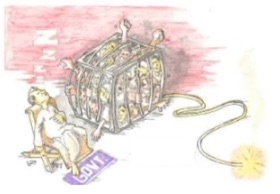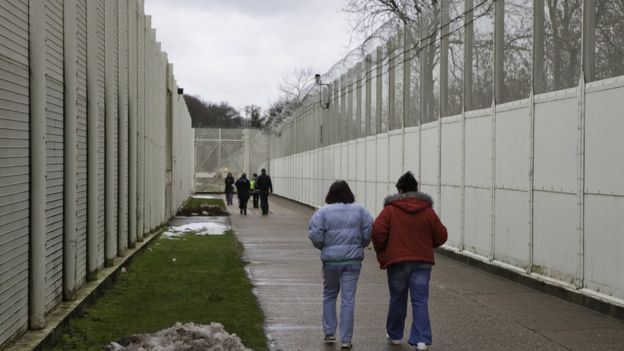
When Covid hit India, the reports, and for some expectation, were that the State would consider pandemic measures, such as the need for social distancing, and would reduce the incarcerated populations. To no one’s great surprise, that did not happen generally, and in particular it did not happen in women’s jails and prisons. For example, the state of Maharashtra has 60 central and district jails. Of them, one, Byculla Women’s Jail, is the only one dedicated for women and children, but that doesn’t mean the conditions are in any way better. Byculla Women’s Jail has always been an overcrowded hellhole for women and children.
But first, let’s consider the national situation. The most recent National Crime Records Bureau (NCRB)’s annual Prison Statistics of India looks at 2020. It finds, first, that, between 2015 and 2020, the prison population increased by 16.4%. In 2020, the number of undertrial prisoners increased by 11.7%. In 2020, there were 1427 women prisoners with 1628 children. 1184 were undertrial, with 1345 children. 214 convicted, w 246 children. Where are the women? In prison, awaiting trial. Occupancy rate for women in all jails at national level was 72.2%, but in many states the rate was much higher. 20,046 women were held in jail, of whom 15.4% were in women’s jails. The number of women in women’s jails increased 3.7% from 2015 – 2020; in Other Jails, 14.2%. Between 2015 and 2020, the number of convicted incarcerated people decreased by 16.1% while the number of undertrial inmates increased by 31.8%. Again, where are the women? In prison, awaiting trial.
In 2020, 4,83,585 were incarcerated: 4,64,260 men, 19,255 women, 70 transgenders were confined in various Indian jails at the end of the year 2020. Of that 4,83,585 population 3,68,381 were remand, awaiting trial. 96% are undertrial. Incarcerated women are disproportionately, overwhelmingly undertrial.
Finally, in 2020, 1,291,504 people awaiting trial were released. In 2019, that number was 1,606,731. So much for pandemic concerns.
Byculla Women’s Jail was at 101.5% of capacity, in the midst of the ferocious first wave that hit India, and Mumbai in particular, where Byculla is located. On March 31, 2020, held 352 women. Its capacity is 200. That’s 176% occupancy rate. Last September, when Covid raged through Byculla, the jail held close to 300 women. According to activist Sudha Bharadwaj, recently released, sort of, on bail from Byculla, her unit housed 75 women. It had a maximum capacity of 35. Women slept side by side by side on the floor, each on a mat the “size of a coffin. Overcrowding becomes a source of fights and tensions. There’s a queue for everything – food, toilets.” 24% of the women in Sudha Bharadwaj’s unit were infect with Covid: “The judiciary should consider decongesting our jails more seriously. Even during the pandemic most people did not get interim bail to return to their families.” In April 2021, Byculla accounted for 33% of the Covid cases in Mumbai’s five jails.
Amidst a pandemic and despite promises to reduce the incarcerated populations, why is Byculla Women’s Jail a death trap? Why is the entire prison system, the entire criminal justice system, filling prisons and jails with people who are presumed to be innocent and are awaiting trial? Why sentence people to death or serious infirmity in this manner? We have seen this before, in pretty much every carceral system in the world. Out of sight, out of mind, out of luck, and, soon, out of breath. This is the State of Abandonment: “Zones of abandonment … accelerate the death of the unwanted. In this bureaucratically and relationally sanctioned register of social death, the human, the mental and the chemical are complicit: their entanglement expresses a common sense that authorized the lives of some while disallowing the lives of others.” That original formulation pertained to Brazil, but we have seen it in the United States, England and Wales, South Africa and beyond. What happened in the prisons and jails of India in 2020, during the pandemic, what happened in Byculla Women’s Jail? Absolutely nothing. Nothing happened … absolutely.
(By Dan Moshenberg)
(Art Work: Arun Ferreria / Free Them All)

